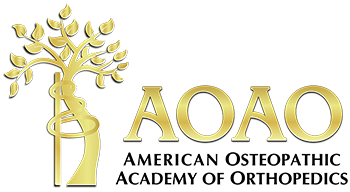Maysen Smith OMS-II1, Jared Tadje MD, MBA2
1Rocky Vista University College of Osteopathic Medicine
2Tadje Orthopaedics
Abstract
A 42-year-old patient sustained a right tibia and fibula (tib-fib) fracture after falling off a ladder. This required surgical treatment to include an open reduction internal fixation of right distal tibia with intramedullary rod placement. Subsequently, the patient developed a deep fibular nerve injury 2 months status post the surgery despite participating in physical therapy and working at a modified level. Although the tib-fib fracture and surgery alone are an intense and difficult recovery, the unforeseen circumstances that arose during this time were more impactful than expected. After the patient had scheduled a nerve graft surgery with a foot and ankle specialist, his deficit resolved without any intervention several months later.
Keywords: Case report, tib-fib fracture, nerve injury, motor function, surgery, deep fibular nerve
Introduction
Tibial shaft fractures are the most common long bone fracture. It is more common in males than females. Diagnosis is usually confirmed with plain radiographs. The mechanism of injury can be high energy (motor vehicle accident or falling from a height) or low energy (twisting). There are several instances where it is accompanied by a fibula fracture or syndesmosis injury. Treatment is commonly surgical in nature with intramedullary nailing [2]. Recovery from this surgery is approximately 1 year in typical circumstances. The major blood supply to the tibia includes the anterior tibial artery and fibular artery. The major nerve supply is the superficial fibular nerve, deep fibular nerve, and tibial nerve [3]. There are several challenges brought forth by these fractures and subsequent surgeries due to the need for patience and unforeseen circumstances.
Methods/Results
This patient presented two weeks post-op from intramedullary nailing of distal tibia and closed treatment of a proximal fibula fracture. He was working out of state when the injury occurred, had emergent surgery out of state, then came to home for post-operative care. The patient was processing as expected and was non-weight bearing for two weeks with a gradual return to full weight bearing as tolerated. He was attending physical therapy and was experiencing an expected level of discomfort for his injury. When the patient presented for a routine 10-week post-operative appointment, he expressed that he had lost sensory and motor function to his great toe about two weeks prior (eight weeks post-op). He denied any provoking factors or new injuries. His updated x-rays did not show any movement of the hardware and great bone callus formation. It was recommended to conduct an electromyography (EMG) study which showed a lesion of the deep fibular nerve with prominent denervation of the extensor hallicus longus (EHL). He was referred to a specialist who recommended continuing with physical therapy and dry needling. When his symptoms were not improving, he went to see a foot and ankle specialist who discussed nerve graft surgery with him. He agreed to proceed. Before his surgery took place, his motor nerve function returned, and his sensory function partially came back at 10 months post-op.
Discussion
This patient’s case was a unique circumstance. He experienced a nerve palsy that is incredibly rare and, at the time, was the first presentation to a well-seasoned orthopedic surgeon. The consensus for treatment was to ultimately continue with physical therapy and to hope for a return of nerve function. The return of nerve function is unknown and cannot be predicted. Robinson et al. performed a prospective study with 208 patients who had undergone intramedullary nailing of tibia shaft fractures. Of these patients, 11 experienced deep fibular nerve palsy. Only one of these patients had an associated proximal fibular fracture, similar to our patient. Eight out of the 11 had associated great toe weakness with no involvement of surrounding muscles, like our patient. Three of these eight were confirmed with an EMG test. After 3-4 months, there was a recovery of muscle function in all patients. However, greater than one year out from surgery, three patients continued to experience residual tightness in the EHL [1]. This case shows that something that seems so minute can cause such a distressing lifestyle. This patient showed all these characteristics and got the outcome that every party was hoping for. Fortunately, this patient was able to overcome the challenges that present with post-operative recoveries after a traumatic tib-fib fracture. However, it is inevitable that this is not the case for every individual who has a similar presentation and operation.
Figure 1 | Figure 2 | Photo/Video 1 | Photo/Video 2
Required Disclosures and Declaration
Copyright Information: No Copyright Information Added
IRB Approval Information: Yes
Disclosure Information: No known conflicts of interest
References
- Robinson, C M et al. “Dropped hallux after the intramedullary nailing of tibial fractures.” The Journal of bone and joint surgery. British volume vol. 81, 3 (1999): 484-4. Doi:10.1302/0301-620x.81b3.9140
- Figure 1. Nihal Apaydin, Murat Bozkurt, Chapter 10 – Surgical Exposures for Nerves of the Lower Limb, Editor(s): R. Shane Tubbs, Elias Rizk, Mohammadali M. Shoja, Marios Loukas, Nicholas Barbaro, Robert J. Spinner, Nerves and Nerve Injuries, Academic Press, 2015, Pages 139-153, ISBN 9780128026533, https://doi.org/10.1016/B978-0-12-802653-3.00059-2
- Figure 2. AUTOBAHNTM Tibial Nailing System. Globus Medical. Retrieved January 23, 2023, from https://www.globusmedical.com/products/autobahntm-tibial-nailing-system/


